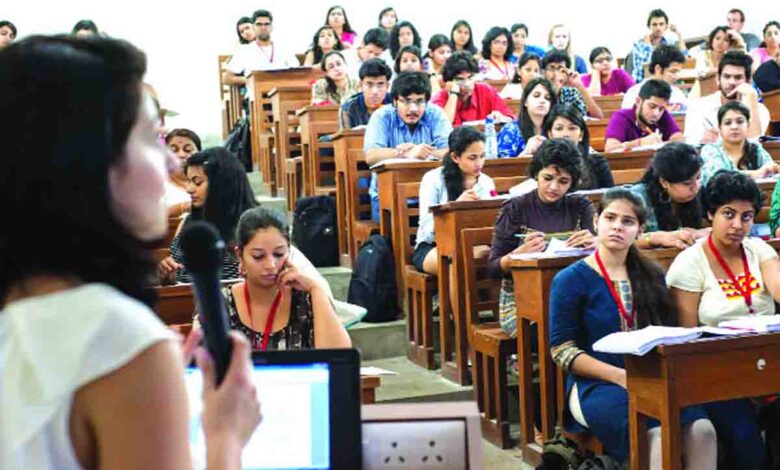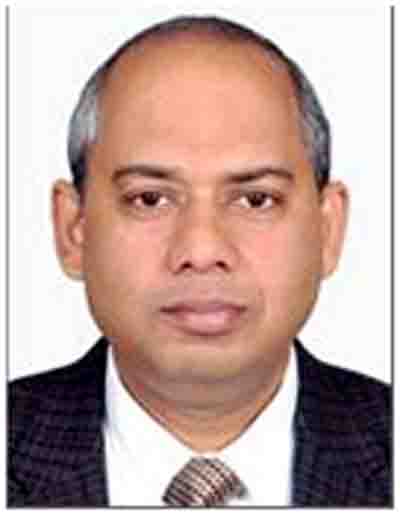GUEST COLUMN : Investing in India’s future by transforming education

 Onkar Singh
Onkar Singh
With the Union Budget 2024-25 presented in parliament, yet another buzz is there as in past years to foresee its impact. The budget proclaims the envisaged transformation of India into ‘Viksit Bharat’ through nine key areas namely productivity and resilience in agriculture, employment and skilling, inclusive human resource development, manufacturing and services, urban development, energy security, infrastructure, innovation research and development, and next-generation reforms. The desired results in each of these areas can be achieved only with capable human power, especially at the time when the nation is blessed with a demographic dividend and the average median age of the young population is 28 years. Among different sectors, the budgetary provisions for education and allied areas are key contributors to economic growth, technological advancement, sustainable development and social development for a peaceful equitable society.
Since independence, all education policy documents including National Education Policy 2020 have emphasised increasing the spending in the education sector and taking it up to six per cent of GDP. This also becomes important now when the country is dreaming of restoring the ancient tag of being Vishwa Guru. Undoubtedly, the availability of youth in abundance compared to other countries across the world holds the potential to accomplish the dream provided the competency of human resources and its engagement is commensurate to the present and future global requirements.
Allocation of Rs. 1.48 lakh crore in the budget 2024-25 as compared to Rs 1,12,898.97 crore in the education sector in 2023 earmarks an increase in spending for human resource development through the routine and a few novel schemes on education, skilling and employment. However, the fraction of GDP spent on education is far less than was targeted in NEP 2020. The budget at a glance demonstrates several ambitious heads having allocations for the betterment of the human capital and it fuels new hopes. Enhanced allocation in components with quite attractive acronyms namely ‘Samagra Shiksha’, ‘Strengthening Teaching-Learning and Results for States (STARS)’, ‘PM Schools for Rising India (PM SHRI)’, ‘Pradhan Mantri Uchchatar Shiksha Abhiyan (PM-USHA)’, ‘Post Matric Scholarship for SCs’, ‘PM Young Achievers Scholarship Award Scheme for Vibrant India (PM YASASVI) for OBCs, EBCs and DNTs’, ‘Research and Development Projects’, ‘PM Uchchatar Shiksha Protsahan (PM-USP) Yojna’, ‘World Class Institutions’, ‘Research and Development in IT/Electronics/ CCBT’, ‘Skill India Programme’, ‘Eklavya Model Residential Schools (EMRS)’ and others are prospective gamechangers. Simultaneously, newer initiatives like ‘New employment generation scheme’, ‘New ITI upgradation scheme’ and many more aim at strengthening youth for job readiness. Nevertheless, it remains to be seen to what extent it will address the precarious concerns about the worthiness of the educated ones in the country.
An introspection of the outcomes of the mammoth education system substantiates that there are perceptible gaps concerning competencies and employability. As a result, comprehensive efforts for imparting skills become relevant for making youth employable. Rejuvenating the industrial training institutes will inevitably open better prospects due to improvised vocational training but limited to those intending to work at the lowest rank in the work chain. The setting up of a functional National Skill Qualification Framework facilitates the recognition of acquired skills and incentivises blue-collar workers, but its wide acceptance is yet to be seen. Schemes like Samagra Shiksha, STARS, PM SHRI, EMRS, etc. endeavouring fortification of preschool to class XII education can metamorphose the public education system for the masses provided there is the availability of teachers, classes are held truthfully and skill gaps are taken care of at the secondary level of education itself. Accordingly, remodelling of academic framework and paraphernalia to integrate ITI/vocational training programmes in the secondary level education system could be contemplated for active learning of some relevant skill by each learner under the Skill India Programme.
Due to the hands-on training, these skilfull youth will also be fit for entrepreneurship in the new realm of novice startups provided their family circumstances permit and they are prepared to take risks for the same. Indisputably, it is a herculean task to arrive at a One Youth One Job scenario unless the labour-centric ventures are set up either by private or public entities. Maybe, the setting up of mega industry clusters with a priority on agriculture in a cooperative format could bring some ease at a mass scale.
Another flagship scheme of internships to one crore youth in five years in 500 top companies with a monthly internship allowance of Rs 5000 is a temporary relief to those wanting jobs, nonetheless, such beneficiaries must not be complacent and explore suitable placement during this period. It is worth noting that paid internships have been in place in the industry for quite some time in which interns contribute to the productivity of the organisation and get paid, though these are too small compared to the internship seekers. Most likely, the budget allocation for paid internships will help in checking the reluctance of industry to offer internships and motivate them for fruitful engagement of youth in updating themselves for future employment.
Besides new initiatives, the ongoing schemes of qualitative improvement of education at primary, secondary, and tertiary levels ought to be implemented effectively with full attention on ameliorating the classroom teaching-learning processes. A closer look shows that the majority of employability gaps can be addressed through committed and meaningful learning in formal education processes. Pumping funds into schools, colleges and higher education institutions can only set up up-to-date teaching infrastructure but the inadequacy of well-qualified competent teachers and staff and the presence of ad hoc/temporary teachers may not lead to expected gain in quality of output from them. This calls for urgent interventions to realise the sufficiency of career teachers and supporting staff to make educational institutions vibrant and bustling with creative students and teachers ready for the application of knowledge and its creation.
Further, schemes like PM USHA, PM USP, world class institutions, research and development funds, etc. will invigorate the higher education and world-class teaching-learning-research ecosystem in the country. These need to be executed to reinforce the existing public education system concerning infrastructure, institutional governance, learning ambience, teacher-student ratio, teaching pedagogy, synergy between teaching and research, knowledge creation, experiential learning and equity. Given the hugely varying socio-economic spectrum of India, it may not be worthwhile to imitate the models of developed nations and levy the full cost of education on the students in public institutions. Also, the forewarning of quality defects in the outcome of the higher education system must be taken into account while expanding it to achieve the Gross Enrolment Goal of 50 per cent. To tap the potential of the young population, which is there for a limited period, the existing 56 central universities, 487 state universities, 135 deemed to be universities and 485 private universities have to ethically flourish as nuclei for strengthening the economy of the nation. The handholding and nurturing of ideas for reinforcement of existing and developing new products, processes, services and knowledge in these higher education institutions can usher the country to become Viksit Bharat expeditiously.
The cosmetic changes in the education system through spending on its infrastructure, upkeep and facilities can trigger positive changes in its public perception while the major thrust on enrichment of teaching human resources and quality of deliveries during interactions in institutions will make it sustainable and comparable. Consistency in the educational framework and processes is essentially required as too frequent changes in it do not augur well in the long run and create chaos. Undeniably, the allocations made for strengthening the education system, skilling, internships, research and development in the budget 2024-25 will enable certain transformations which may fizzle if not complemented through committed teaching-learning-assessment processes at the core like those in ancient Gurukuls.
(The author is the vice chancellor of Veer Madho Singh Bhandari Uttarakhand Technical University. Views expressed are personal)






